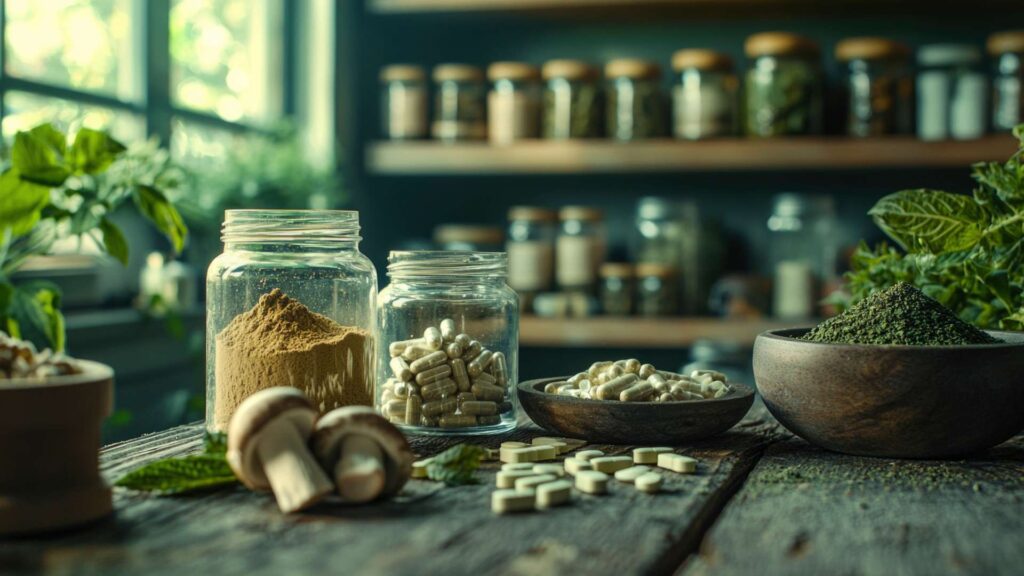Microdosing has recently become a widely popular subject that especially influences the scientific study of natural supplements, together with botanicals. People have shown interest in kratom botanicals due to their natural wellness properties that originate from Southeast Asia.
The practice of consuming microdoses of kratom has become widely popular for those desiring moderate effects overlaid with extended duration but reduced by a larger dose intake.
The discussion requires an understanding of two main points about microdosing including its definition and specific kratom applications.
This guide will study kratom microdosing, with key details about its advantages and methods to use it while being responsible.
What Is Microdosing?
Sub-perceptual substance amounts known as microdoses lead consumers to experience delicate system effects instead of total system impact.
The microdosing technique emerged through the psychedelic drug use of LSD and psilocybin but evolved to encompass any substance, including kratom.
The modest intention of microdosing kratom aims to boost well-being along with attention and mood, without creating overpowering sensations for the user.
The procedure for kratom microdosing mirrors the general method. Users administer only a tiny portion of a complete dose when performing a microdose rather than consuming the entire dosage amount.
The lower dosage of kratom through microdosing enables users to receive the potential advantages of the substance without creating overwhelming effects.
The Concept of Microdosing Kratom
People who practice microdosing kratom consume afflictions of the plant substance at levels between 0.5 and 1 gram through various daily doses.
By using smaller kratom quantities continuously throughout the day you can sustain minimal alkaloid concentrations to help control your mood, along with improving your overall wellness while avoiding major changes in your energy levels.
People who want to accept kratom as part of their lifestyle tend to prefer this method because it enables them to experience the benefits without reaching the fully intense effects that higher doses deliver.
Microdosing allows users to detect kratom’s advantages while taking steps to stop dependency development.
Microdosing Cannabis: A Guide to Low-Dose Cannabinoid Use
The microdosing method now crosses boundaries from its original use within the psychedelic community. The cannabis industry started integrating the microdosing technique into its operations in recent years.
How do you microdose cannabis? A person will consume small amounts of oral cannabinoid products. The designated small doses, also known as “servings” need to remain below the perceptual threshold so psychoactivity cannot be detected.
The psychoactive properties typically occur in THC derivatives including delta-8 and delta-9-THC and THC-P. Users will experience different levels of effects when consuming the sub-perceptual amount of THC through oral consumption.
Most people who do not show tolerance experience delta-9-THC’s sub-perceptual effects when taking less than one to two milligrams of this widely used x-THC-x.
The sub-perceptual dose for delta-8-THC might extend up to 3 to 5 mg compared to its 20% increased level.
In regard to the other naturally occurring cannabinoids, the psychoactivity is much less pronounced. Because one doesn’t have a threshold to stay below, microdosing, by definitionally, doesn’t make sense.
You are not trying to avoid any of the potentially unsavory or anxious effects that some get when taking THC.
That said, the sub-perceptual dose for CBD, CBN, CBG, etc., will vary between 10-100mg depending on the person. In general, rarely do conversations about microdosing encroach upon the use of already non-psychoactive substances.
The reported psychoactivity that comes from higher servings of these non-psychoactive cannabinoids is likely just the result of residual THC left from the extraction.
Understanding Toxicity: Why Dose Determines Poison
Any substance can lead to toxicity when exposed to excessively high amounts. The toxic damage identified within bodies typically affects the stomach, together with the kidney and liver.
The first-pass metabolism process determines why toxicity normally appears in the stomach, kidney and liver organs.
This serving-dependent effect is a complicated but incredibly important aspect of pharmacology. Anything can be toxic. Water in sufficiently high quantities can be toxic to the point of being deadly.
Potential Benefits of Microdosing Kratom
Research studies continue to develop about kratom but preliminary experience shows microdosing kratom could provide various positive outcomes.
Various benefits from microdosing kratom will demonstrate individual differences, and not all people achieve the same results. Here are some of the common effects:
1. Enhanced Focus and Productivity
A considerable number of users claim that kratom microdosing enables them to function effectively both at work and at school during their entire day.
People report that kratom’s subtle effects deliver modest energy enhancements together with clear mental functioning, thus enabling better task completion ability and improved concentration.
2. Mood Support
Users claim that kratom alkaloids influence receptors located in the brain that manage mood operations.
By using small doses, people may find peace and stability, though their entire system remains controlled.
3. Mild Energy Boost
Minimal kratom consumption typically leads to stimulating side effects for users. A small kratom intake delivers a mild body elevatio,n which attracts users who want better performance throughout their day.
4. Subtle Relaxation
The therapeutic effects of low kratom consumption differ from the sedative properties typically associated with larger doses.
It provides users with a refined feeling of relaxation. The therapeutic value makes kratom specifically useful for managing regular stressors that people encounter daily.
5. Sustainable Use
By using microdoses, people experience fewer risks of tolerance development. Users who take small doses will extend their experience of kratom benefits because they do not need to consume larger amounts.
Microdosing with Kratom: How to Microdose Kratom
Anyone who wants to experience microdosing kratom needs to handle their approach with careful thought and responsibility. Here’s a step-by-step guide to help you get started:
1. Choose the Right Strain
Strains of Kratom receive a classification based on their effects together with the leaf vein color. When microdosing, people normally choose white or green vein strains because these strains are recognized for their energetic qualities, together with mood-enhancing capabilities.
Your goal will determine whether red vein strains are an appropriate option because they commonly produce relaxation effects.
2. Start with a Low Dose
When microdosing, less is more. People should start their kratom consumption with a dosage between 0.5 and 1 gram.
The typical standard range for kratom doses amounts to 2 to 5 grams, but the microdose level consumes significantly less at 0.5 to 1 gram.
Testing a minimal dosage enables you to learn about your body’s responses while making necessary modifications.
3. Time Your Doses
One can achieve the effects of kratom by dividing their doses into smaller amounts to use throughout the day.
Most people choose a kratom intake pattern of taking doses every 4 to 6 hours based on their schedules and requirements.
Take your dose during the morning hours and then again at midday, followed by early evening.
4. Monitor Your Response
Monitor both the mental and physical effects your body experiences while microdosing. Write down your kratom measurements combined with the timing of administration and associated reactions you detect in a personal journal.
The recorded observations will enable you to find your optimal usage method.
5. Stay Hydrated and Nourished
The dehydrating effects of kratom are mild, but you need to keep drinking water in larger amounts when consuming it. Assuming a balanced diet adds benefits to your regular health status during microdosing periods.
6. Take Breaks
Taking intermittently scheduled breaks from microdosing will help you reduce tolerance risks to its active compounds.
You should schedule your kratom microdosing for 5 days, followed by 2 days without use of the substance.
Regular breaks from using kratom can prevent the buildup of tolerance and ensure the continued effectiveness of the herb.
Who Should Consider Microdosing Kratom?
Your introduction to kratom should begin with using small kratom doses through microdosing or drinking a small amount of kratom tea. This will be the most appropriate consumption method for beginning kratom users.
The gradual approach enables users to build a tolerance to alkaloids so they can determine their perfect serving amount.
When you wish to explore diverse kratom vein colors, it might be beneficial to start with microdosing the fresh kind until you adapt to the strain.
New blends need slow consumption to teach beginners about the subtle variations among the spectrum of three kratom colors.
Kratom tea microdosing provides an excellent method to lower your kratom tolerance and start over with a fresh kratom experience.
Regular use of microdoses leads to the ability to handle kratom in lower quantities.
Potential Risks of Microdosing with Kratom
While microdosing kratom is generally considered low-risk, it’s important to be aware of potential downsides:
- Tolerance: Even with microdosing, regular use can lead to tolerance over time. Taking breaks can help mitigate this risk.
- Dependence: While microdosing is less likely to cause dependence than larger doses, it’s still possible with prolonged use.
- Side Effects: Some users may experience mild side effects like nausea, dizziness, or headaches, especially if they take too much.
- Lack of Regulation: The kratom industry is not tightly regulated, so product quality can vary. Always choose a trusted supplier.
Final Thoughts
People engage in microdoses of kratom as an interesting process that allows them to find possible advantages of botanical substances through moderated yet controlled doses.
Users report feeling more focused and experiencing mood improvements in addition to mild stimulation from regularly taking small measured kratom portions each day.
Similar to all supplementary products, kratom needs careful and proper usage. Begin with a minimal dosage before checking your reaction and selecting only the best quality products.
Patients should seek professional health advice either when starting kratom use for the first time or when feeling doubtful about its consumption.
The discovery of your optimal kratom usage level constitutes the main goal of adjusting your consumption to microdoses. A well-planned utilization makes kratom accessible for improving your wellness program.
Want to share a tip? Write to us at info@7ohwellness.com
Read More







